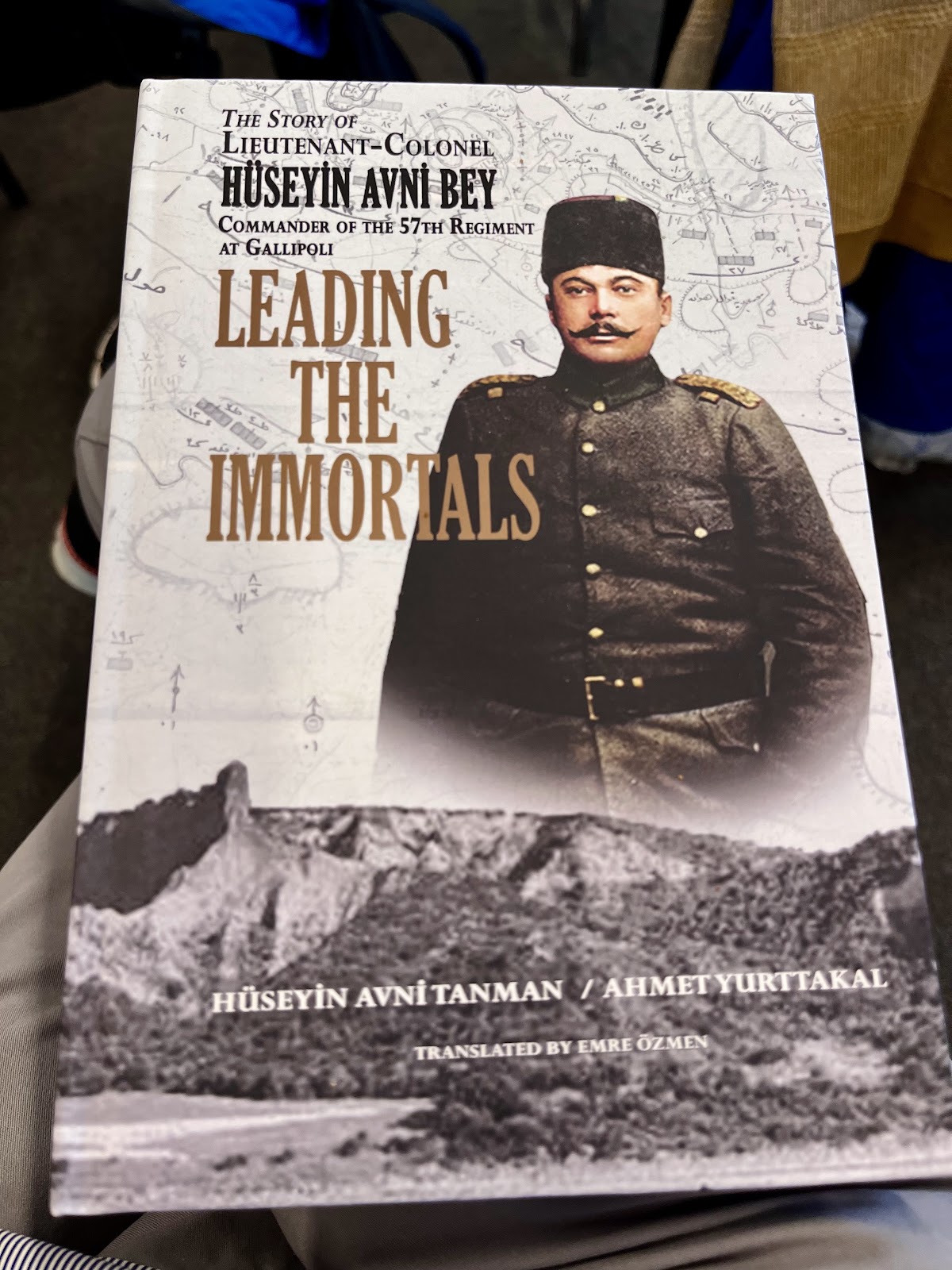I was in Leeds today attending the launch conference for an English translation of Hüseyin Avni Bey's story of the Ottoman 57th Regiment at Gallipoli. It is a beautifully produced hardback book, featuring numerous colour illustrations and maps.
The theme of the conference presentations reflected the book, This is a study of the other side of the hill. Most Gallipoli books focus on the failures of the British and Anzac commanders, and there were many. They tend to downplay the outstanding performance of the Ottoman troops. I was made aware of this through an excellent paper written by Ed Erickson in 2001, Strength against Weakness: Ottoman Military Effectiveness at Gallipoli 1915 (Journal of Military History, https://doi.org/10.2307/2677626). He highlighted that the Ottoman divisions on Gallipoli were among the best available, and they had well-fortified positions. They were also well led, and not just by Mustafa Kemal. The III Corps commander, Esat Pasha, was also outstanding.
At the conference, Paul Knight covered the 127th Manchester Brigade at Krithai. Coincidentally, I had walked the area of their initial camp in Rochdale the evening before. Their attack on the Turkish positions was successful, although they had to withdraw because the attacks on both flanks failed. I had thought the British 29th Division on the left of their attack was one of the better British divisions at Gallipoli. However, while the battalions were regulars, they were scraped together from across the Empire, and the attached artillery were territorials. Crucially, they never trained together. Paul did highlight the detailed orders and the effective tactic of leaving a ten-minute gap after the first shelling to encourage the Turks to emerge from their dugouts, while a second barrage caught them. There were armoured cars at Helles in case of a breakout.
Peter Hart covered the Anzac landings, and it was fortunate that no Australians were in the audience! He argued that there was no prospect of success and that the lead brigade commander dug in on the second ridge too soon. Even if they had taken the third ridge, the Ottomans would still hold the high ground. There was an interesting discussion on Ottoman tactics. Contrary to some of the myths, the Anzacs faced very light opposition when they landed. Just a covering force; a trip wire to warn the Ottomans as to where to deploy their reserves.
Two of the speakers argued that the Ottomans should have deployed closer to the landing beaches. I am not convinced. The Ottoman III Corps would have been very stretched if they did that, leaving insufficient reserves to hold the crucial high ground. A study of the fighting at Gallipoli during the Balkan Wars is essential here, as Erickson highlights. John Wilson finished the conference talking about the Ottoman defences and the role of Avni Bey's 57th Regiment.
I am looking forward to reading this book, and it was an interesting conference. I learned several new details about the campaign.
When in Leeds, it would be rude not to pop into the Royal Armouries.
 |
| Pavia |
 |
| Mughal War Elephant |
Back to God's own county, Lancashire, this evening, and my first cricket of the season tomorrow at Old Trafford - weather permitting!

No comments:
Post a Comment